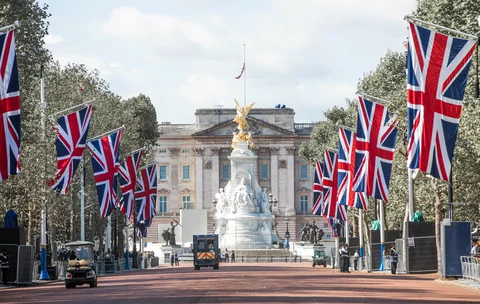We are coming out of the season of dry January, diets and forecasts - leavened by remorse at how the forecasts of the previous January panned out. Most forecasts are a projection of the previous year with a stab at what the upcoming calendar has in store - elections being a classic 'known known’. But as we all know, it is the ‘unknown unknowns’ that are the ruin of a good forecast. There have been plenty over the last ten years - the pandemic, Brexit and George Osborne’s axe to the property market to name a few.
The perennial cry, not just at this time of year, is that there is nothing to buy. What this actually means is that there is nothing to buy that is good that is reasonably priced - and this applies everywhere; chalets in Switzerland, farms in the West Country, flats in London or villas in Barbados. ‘Good’ is necessarily subjective and might be best expressed in a grade from 1 to 10. 10s are very rare: a beautiful house, manageable, surrounded by enough land, in a great area with no trains, planes, roads or pig farms with a view that doesn’t include a wind farm. Maybe one comes up every other year and the price is prohibitive. ‘Good’ exists north of 6 and the judgement is in the inevitable compromises - which includes price. This is the market we are in and inevitably there are more buyers than sellers. This has been the case for the last forty years, an exception being the early 1990s when a recession and the Lloyd’s debacle coincided.
But nothing to buy?
In the country market we cover (these figures do not include the Home Counties from Surrey round to Sussex) there were 20% more houses sold over £5m than in the previous two years and at the lower levels even more, as many of the buyers who bought during the pandemic faced the actuality of commuting as employers demanded bums on office chairs not home sofas. But the reality is that for every good house there will be at least three or four serious buyers as the list of boxes that have to be ticked are many more than for a typical London house. This is reflected in prices for country houses which are, on average, up nearly 18% in the three years from the beginning of 2020. It is telling that comparable prices in London over the same period are broadly flat.
Despite the occasional huge price for an exceptional property, in London the story is steady as you go - but slightly down. Most developers are struggling with Molior, who are the go-to people for research on London developments, estimating that there are 70 developments in trouble across the capital. The problem has been the inflation of building costs and interest rates with no corresponding hike in prices to bail them out. Even the high end has struggled with Northacre’s Palace Street development going into receivership. The exceptions have been where the location (think Grosvenor Square) has been combined with the very highest hotel-style spec that caters for the uber-wealthy international buyer.
One big change in the market over recent years has been the all but disappearance of the single unit investor. This is hardly surprising with the sky-high stamp duty and surcharge for overseas buyers, low net yields and higher interest rates. Without rising capital values these spreadsheet buyers can’t see much to get excited about. Michael Gove, the minister for housing, seems intent on making things worse by increasing the stamp duty surcharge - which must rank as shutting the stable door after the horse has bolted. He is also having a go at the leasehold system with the ostensible (and sensible) goal of dealing with the scandal of the escalating ground rents landed on unsophisticated buyers by unscrupulous developers - mainly in the north of England. Under the same crusading banner he is proposing to do away with Marriage Value - which is the increase in value from the joining of the freehold and leasehold interests in an enfranchisement claim. The losers here will be the big London Estates - but the gainers will be the already wealthy leaseholders who are hardly the most deserving of charity.
So what is the outlook for next year? The election is a foregone conclusion and really can’t be held up as an excuse to do nothing, as elections have in the past. Interest rates are widely perceived as probably being on a slight downward trend - but a return to the sort of rates we saw in the 2010s is highly unlikely. So much for the ‘known knowns’. Given this, any forecast must include the word ‘same’ in it. Not very exciting - but is that such a bad thing?



